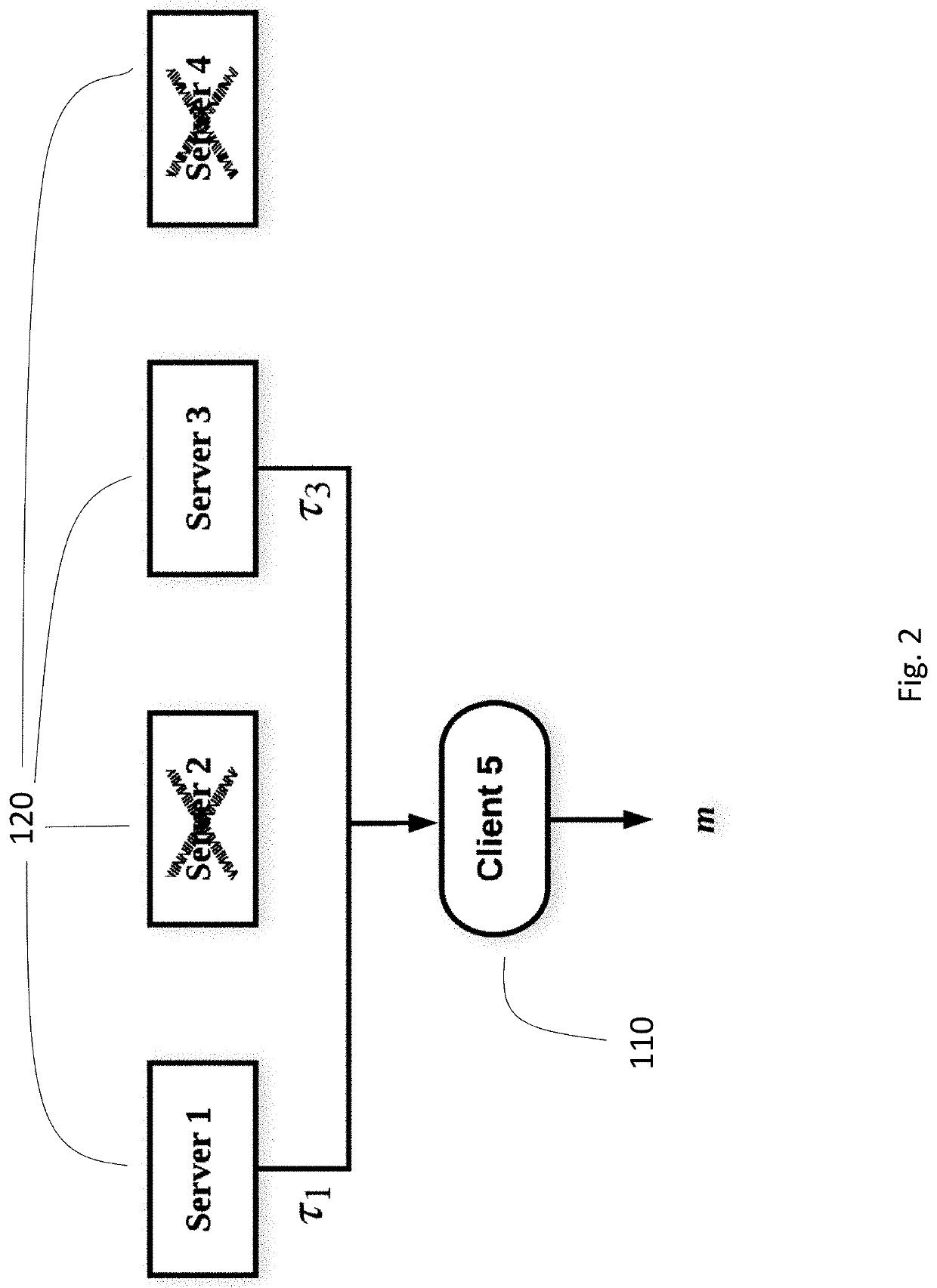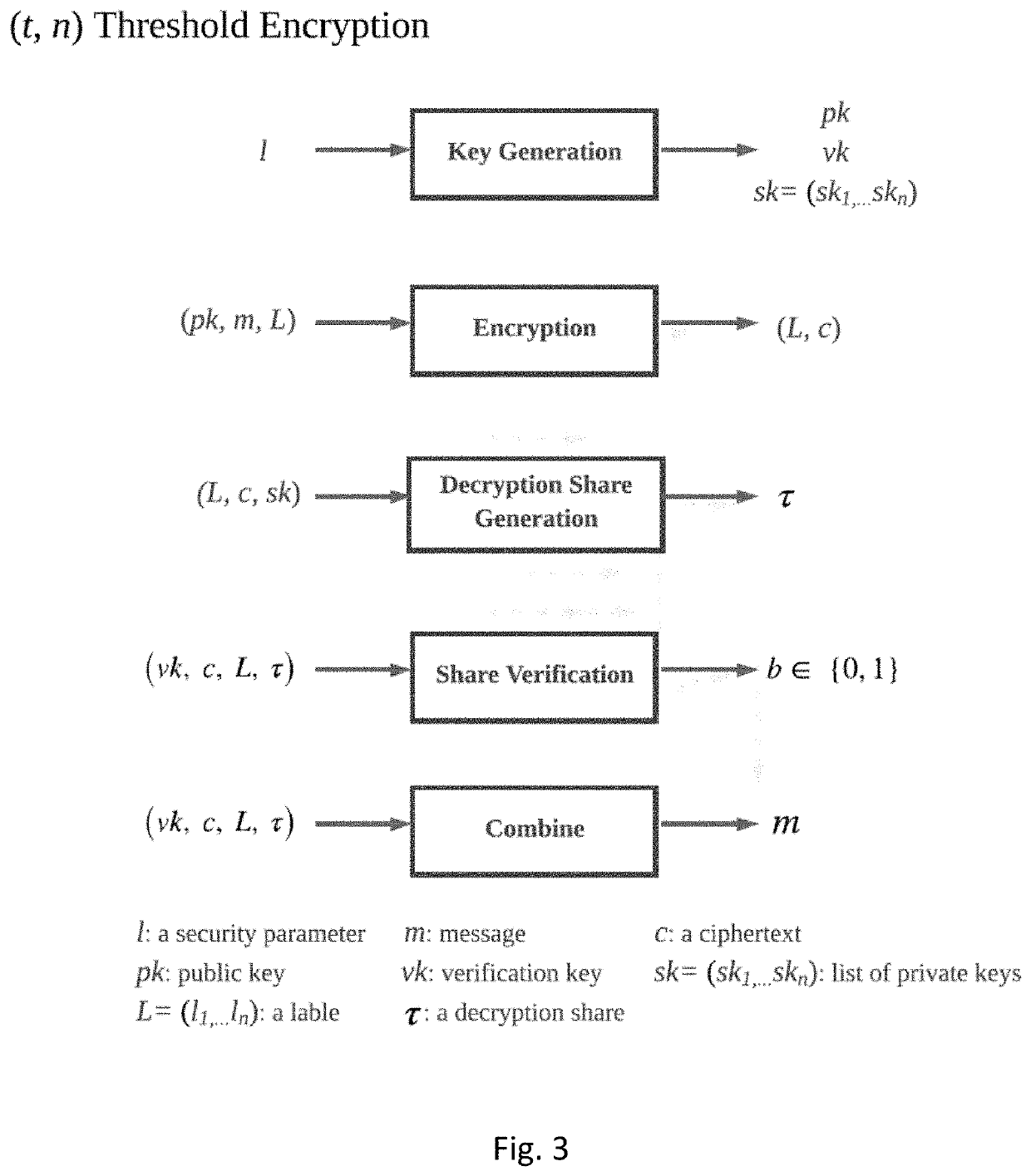Systems and methods for permissioned blockchain infrastructure with fine-grained access control and confidentiality-preserving publish/subscribe messaging
a technology of permissioned blockchain and access control, applied in the field of systems and methods for byzantine faulttolerant and blockchain infrastructure, can solve the problems of limiting its expansion, unable to offer confidentiality on user transactions or blockchain state, and unable to share their private databases
- Summary
- Abstract
- Description
- Claims
- Application Information
AI Technical Summary
Benefits of technology
Problems solved by technology
Method used
Image
Examples
Embodiment Construction
[0049]As required, a detailed description of the various embodiments of the present invention are disclosed herein; however, it is to be understood that the disclosed embodiments are merely exemplary of the principles of the invention, which may be embodied in various forms. Therefore, specific structural and functional details disclosed herein are not to be interpreted as limiting, but merely as a basis for the claims and as a representative basis for teaching one skilled in the art to variously employ the present invention in virtually any appropriately detailed structure.
[0050]The following defines syntax and notation which is used through the application and in the figures, provided for readability of the present application.
[0051]To facilitate reference to the notation used, the following is a summary: m is an operation (transaction, message); n is the number of servers (or brokers, replicas); t is the threshold for threshold encryption, signature, and PRF, set as f+1 herein; f...
PUM
 Login to View More
Login to View More Abstract
Description
Claims
Application Information
 Login to View More
Login to View More - R&D
- Intellectual Property
- Life Sciences
- Materials
- Tech Scout
- Unparalleled Data Quality
- Higher Quality Content
- 60% Fewer Hallucinations
Browse by: Latest US Patents, China's latest patents, Technical Efficacy Thesaurus, Application Domain, Technology Topic, Popular Technical Reports.
© 2025 PatSnap. All rights reserved.Legal|Privacy policy|Modern Slavery Act Transparency Statement|Sitemap|About US| Contact US: help@patsnap.com



